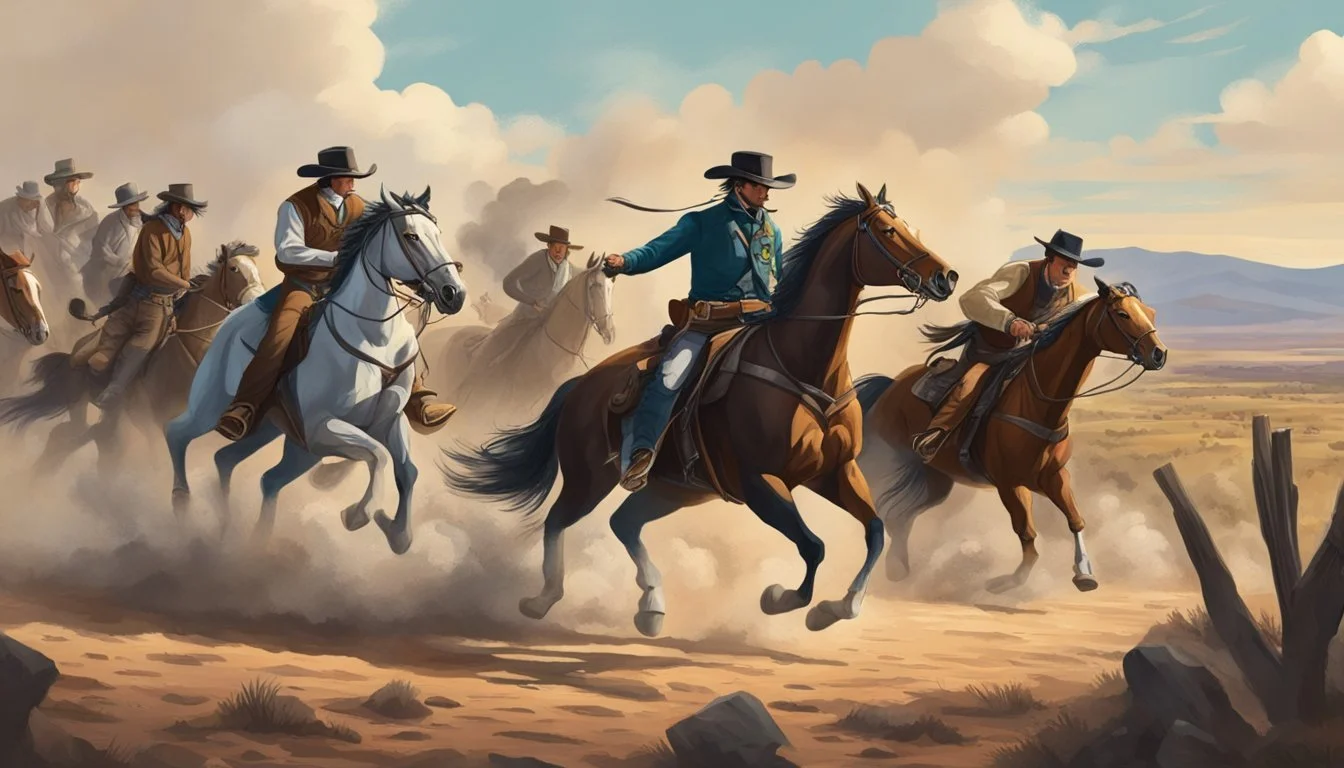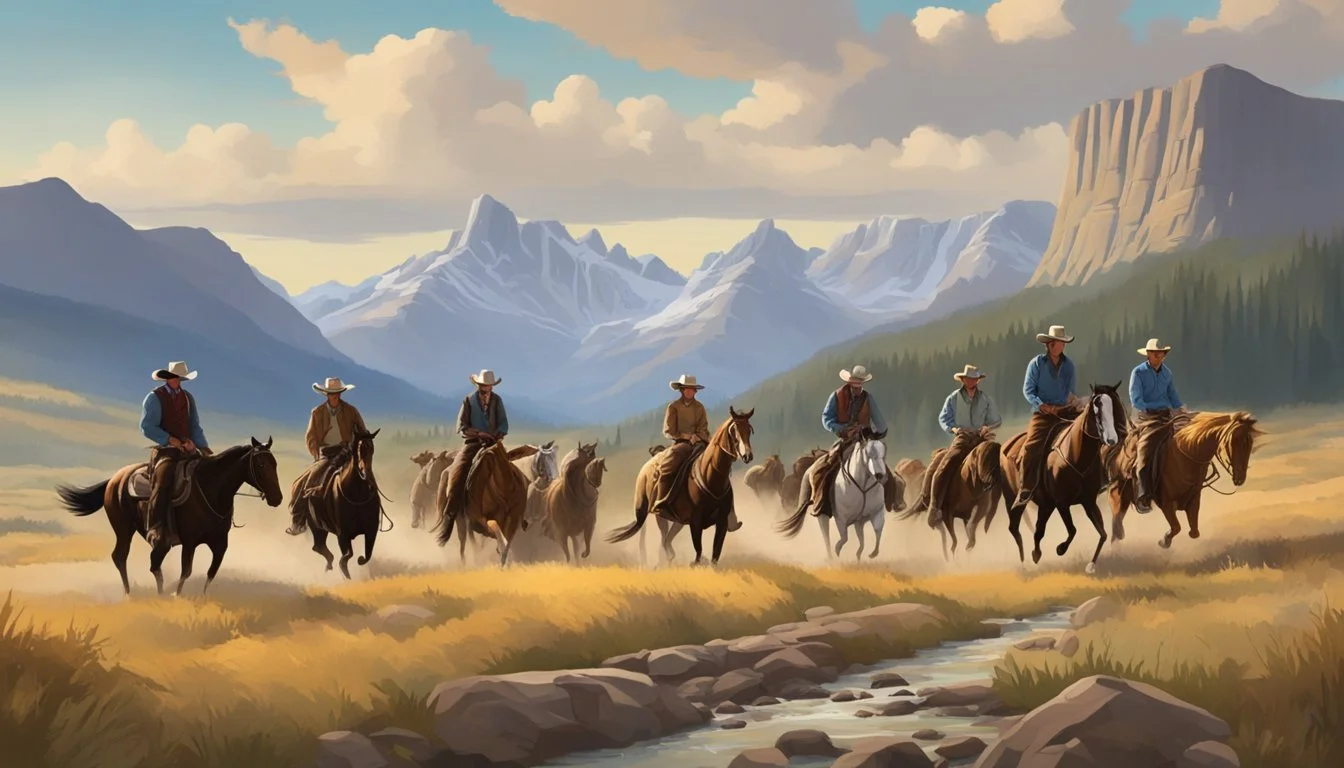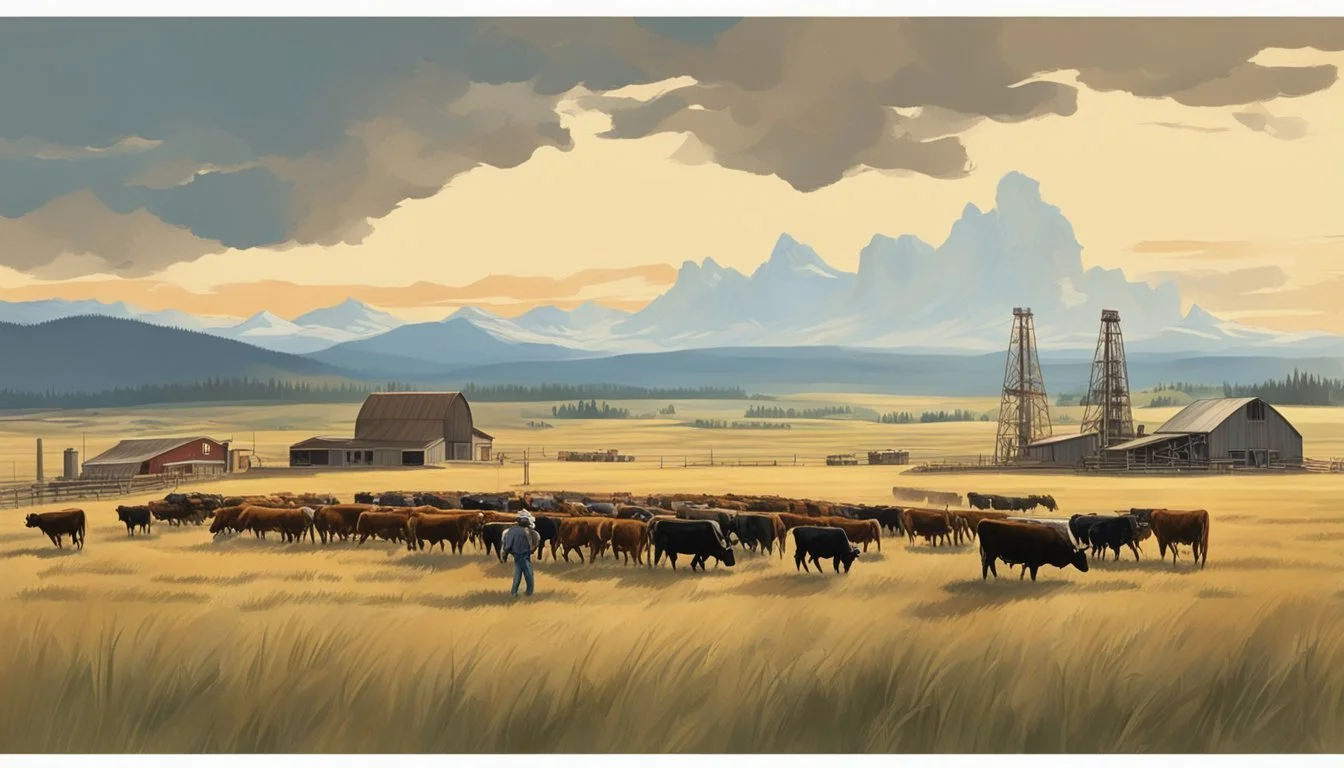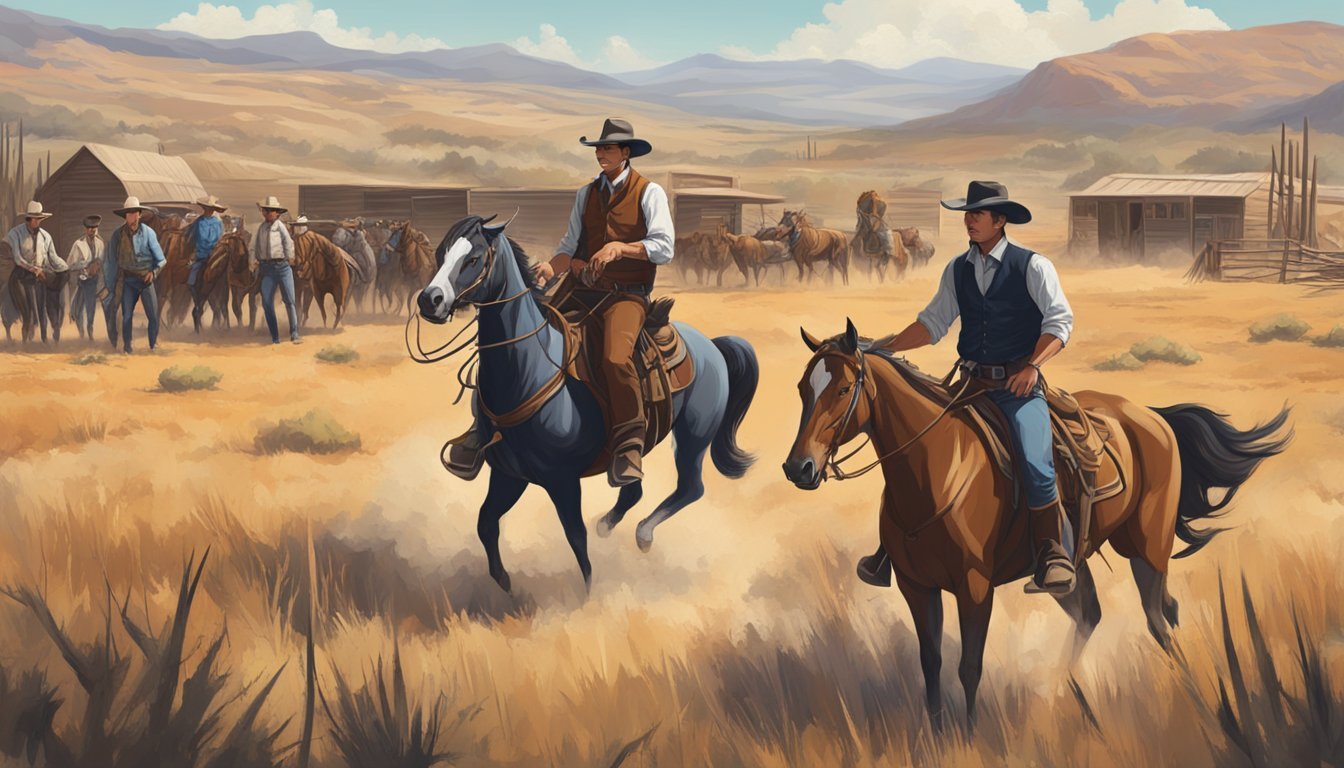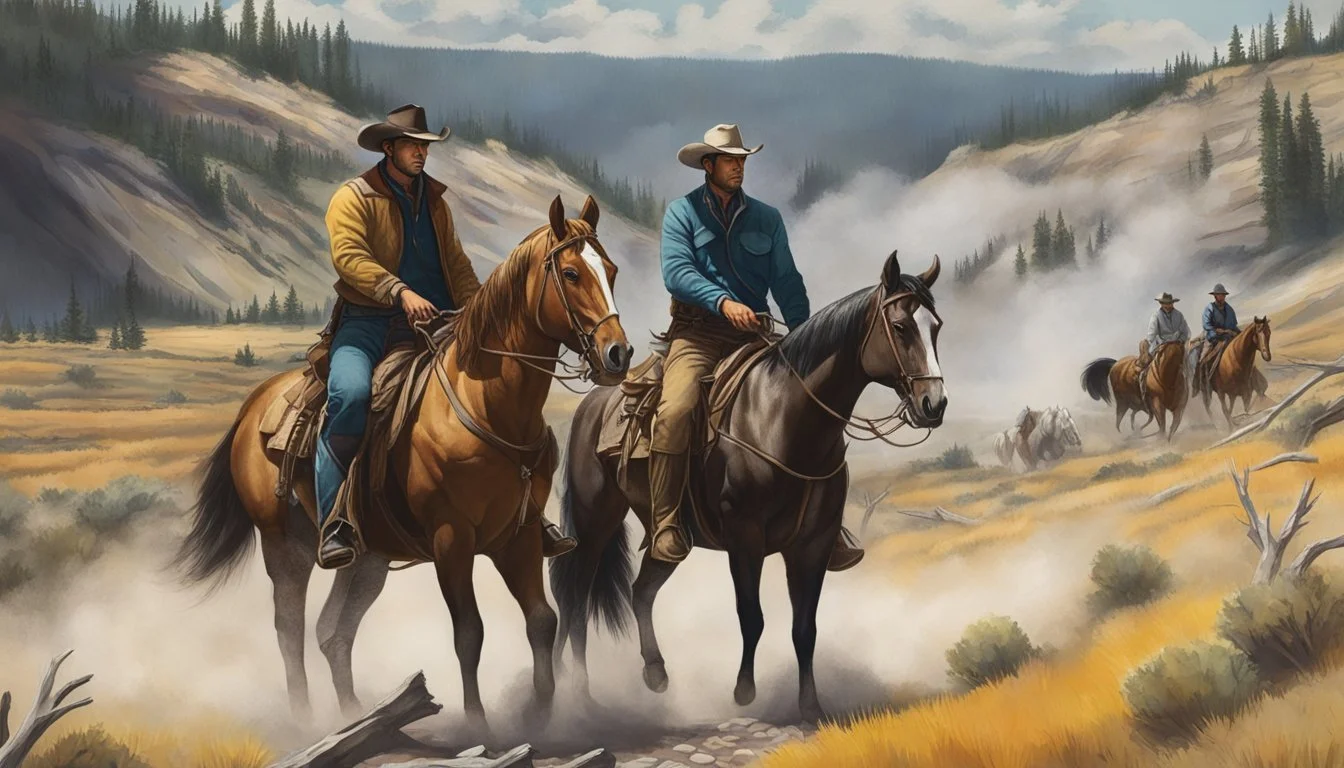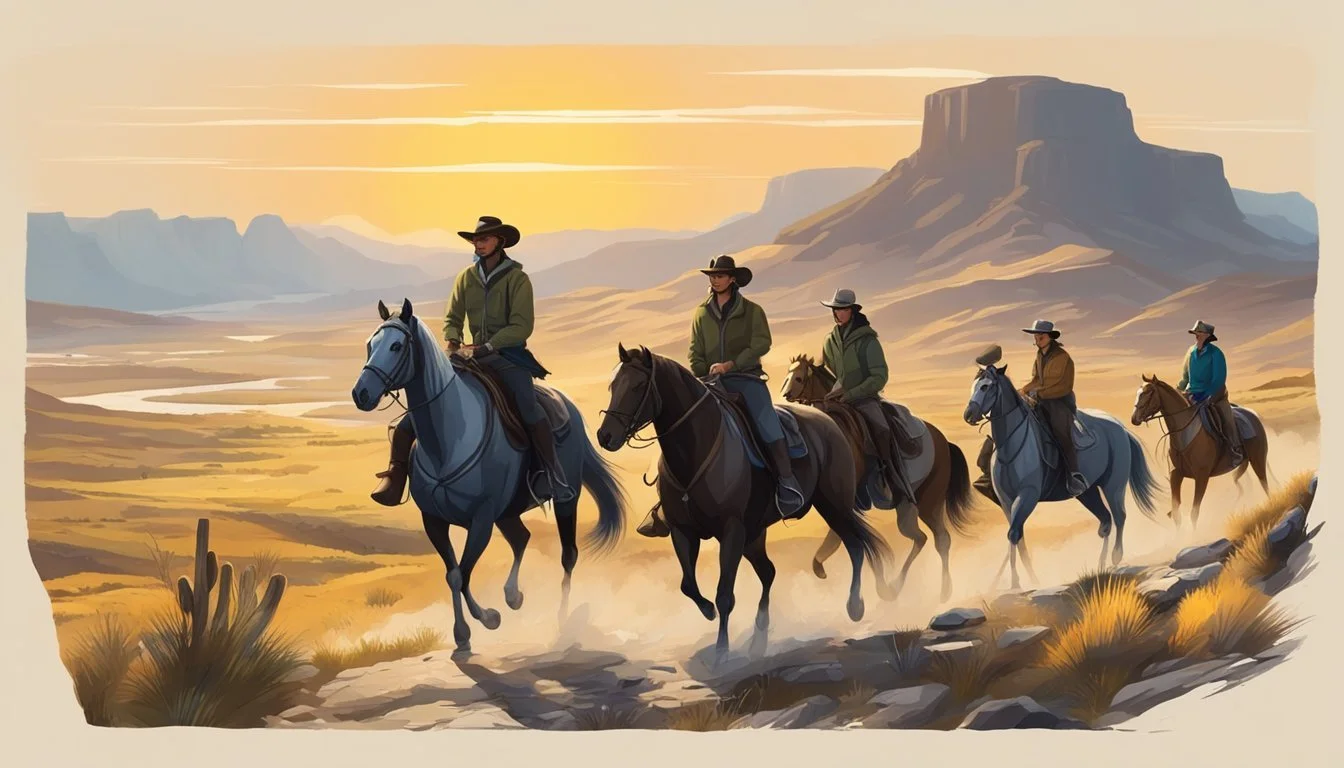Yellowstone Exposes Dark Battle Between Capitalism and Tradition in the Wild West
Yellowstone, the hit TV series created by Taylor Sheridan, captivates audiences with its portrayal of the American West. Set in Montana, the show explores the intersection of capitalism and traditional ways of life through the lens of the Dutton family, led by patriarch John Dutton (Kevin Costner). The series highlights the economic struggles faced by ranchers and rural communities as they grapple with modernization, land development, and changing societal values.
The Dutton ranch serves as a microcosm for broader economic tensions in the region. Beth Dutton, John's daughter and a ruthless businesswoman, embodies the capitalist drive for profit and expansion. Her actions often clash with the traditional ranching lifestyle represented by characters like Rip Wheeler. This conflict reflects real-world debates about land use, conservation, and economic development in areas surrounding Yellowstone National Park.
Paramount Network's Yellowstone resonates with viewers by addressing timely issues such as immigration, environmental regulations, and the erosion of rural values. The show's popularity stems from its ability to present complex socioeconomic themes through compelling characters and storylines, offering a nuanced look at the challenges facing the modern American West.
Historical Backdrop and Setting
The Yellowstone series is deeply rooted in Montana's rich ranching heritage. It portrays the complex evolution of land ownership and traditional ways of life in the American West.
Origins of the Dutton Ranch
The Dutton Ranch, cornerstone of the Yellowstone saga, traces its origins to 1883. This pivotal year marked the arrival of James Dutton in Montana, fleeing the aftermath of the Civil War. He staked his claim on a vast expanse of rugged terrain, laying the foundation for what would become the largest contiguous ranch in the United States.
The ranch's establishment coincided with a transformative period in the American West. Railroads were expanding, bringing waves of settlers and forever altering the landscape. James Dutton's vision was to create a legacy that would endure for generations.
The Evolution of Ranching in Montana
Montana's ranching industry underwent significant changes from the late 19th century through the 20th century. The open range era, characterized by vast, unfenced grazing lands, gradually gave way to more structured land ownership patterns.
By 1923, ranch life had evolved considerably. Technological advancements like barbed wire fencing and improved irrigation systems reshaped ranching practices. These changes allowed for more efficient land management but also led to conflicts over water rights and grazing access.
Traditional ranching culture faced new challenges as urban development encroached on rural areas. Ranchers had to adapt to changing economic pressures while striving to preserve their way of life. This tension between progress and tradition became a defining feature of Montana's ranching history.
Economic Drivers in 'Yellowstone'
The TV series 'Yellowstone' portrays key economic forces shaping modern rural America. These include traditional ranching and the growing tourism industry, both of which play crucial roles in the show's narrative and reflect real-world economic pressures.
Ranching as a Business
Ranching forms the backbone of the Dutton family's livelihood in 'Yellowstone'. The show depicts the challenges of maintaining a profitable ranch in today's economic landscape. Cattle operations require significant land and resources, often struggling against market fluctuations and rising costs.
The series highlights how ranchers must adapt to survive. This includes diversifying income streams and embracing modern business practices. Characters grapple with decisions like selling off parcels of land or partnering with outside investors to stay afloat.
'Yellowstone' also showcases the conflict between traditional ranching and encroaching development. The Duttons face pressure from real estate developers and corporations seeking to exploit their land's value.
The Impact of Tourism
Tourism emerges as a double-edged sword in 'Yellowstone's' portrayal of rural economics. The show illustrates how the natural beauty of places like Paradise Valley attracts visitors and drives economic growth.
This influx of tourists creates new business opportunities. Hotels, restaurants, and outdoor recreation companies flourish, providing jobs and revenue. However, the series also explores the drawbacks of a tourism-based economy.
Increased visitor numbers put strain on local infrastructure and natural resources. Property values rise, making it harder for long-time residents to afford living in the area. 'Yellowstone' captures this tension between economic development and preserving traditional ways of life.
The show's popularity has itself boosted real-world tourism to Montana, demonstrating art's potential impact on regional economies.
Capitalism and its Consequences
The clash between capitalist interests and traditional ways of life in Montana's Yellowstone region has led to significant economic and social changes. These shifts have reshaped land ownership patterns and put pressure on long-standing rural lifestyles.
Land Use and Ownership
John Dutton's Dutton Ranch exemplifies the struggle to maintain large-scale ranching operations in the face of encroaching development. Wealthy outsiders and corporations increasingly buy up land, driving up property values and altering the landscape.
This trend has sparked numerous land use disputes, with ranchers fighting to protect their holdings from subdivision and commercial exploitation. Property boundaries have become contentious as developers seek to expand into previously rural areas.
The influx of capital has also fueled gentrification in small towns near Yellowstone, transforming once-affordable communities into upscale destinations. This shift has exacerbated wealth disparities between long-time residents and newcomers.
Economic Pressure on Traditional Ways
Montana's ranching culture faces mounting economic challenges as global market forces and changing consumer preferences impact livestock prices. Many ranchers struggle to maintain profitability, leading some to consider selling their land to developers.
The rise of tourism and outdoor recreation as economic drivers has created new opportunities but also put pressure on traditional industries. This shift has led to socioeconomic issues as some residents benefit from the new economy while others are left behind.
Wealth disparity has become more pronounced, with a growing divide between those who can capitalize on new economic trends and those tied to declining traditional sectors. This gap threatens the social fabric of rural communities near Yellowstone.
Preservation vs. Progress
The tension between preservation and progress lies at the heart of Yellowstone's economic themes. This conflict shapes land use policies, cultural identities, and the future of traditional ways of life in the American West.
Conservation Efforts
Conservation initiatives aim to protect Yellowstone's natural beauty and biodiversity. The Endangered Species Act plays a crucial role in safeguarding wildlife populations. Environmental regulations limit development and resource extraction in sensitive areas. These measures often clash with economic interests seeking to expand ranching, mining, or tourism infrastructure.
Ranchers and conservationists frequently disagree on land management practices. Some advocate for preserving vast open spaces, while others push for more intensive land use. Balancing these competing interests remains an ongoing challenge for policymakers and local communities.
Cultural Identity and Continuation
Preserving traditional ways of life is central to maintaining cultural identity in the Yellowstone region. Many families have deep roots in ranching, with legacies spanning generations. These traditions face pressure from modernization and changing economic realities.
Native American rights and cultural preservation efforts add another layer of complexity. Tribal communities strive to protect sacred sites and maintain traditional practices on ancestral lands. This sometimes conflicts with both conservation goals and development plans.
Family loyalty often drives resistance to change, as older generations seek to pass down their values and way of life. However, younger family members may be torn between honoring tradition and adapting to new economic opportunities.
Representations of Power and Control
Yellowstone portrays intricate power dynamics through family relationships and external conflicts. The struggle for control permeates every aspect of the show, from internal family politics to wider battles over land and resources.
Dynamics Within the Dutton Family
John Dutton rules the Yellowstone ranch with an iron fist. His children vie for his approval and a stake in the family legacy. Beth, the fierce and ruthless daughter, often clashes with her brothers Jamie and Kayce.
Family meetings become battlegrounds of manipulation and strategy. John's word is law, but his children constantly test the boundaries of his authority.
The show explores how power is transferred between generations. John grooms his children for leadership roles, evaluating their strengths and loyalty.
Opposition and Alliances
The Duttons face numerous external threats to their control. Land developers, Native American tribes, and government officials all challenge their grip on the Yellowstone.
Political maneuvering is a key weapon in these conflicts. The Duttons forge alliances with local politicians and business leaders to protect their interests.
Native American characters like Thomas Rainwater present a complex opposition. They fight for their own land rights, creating a nuanced portrayal of competing claims to power.
The show depicts how economic control translates to political influence. The Duttons leverage their wealth and land holdings to sway local and state politics in their favor.
Cultural Reflections in 'Yellowstone'
'Yellowstone' mirrors complex cultural dynamics in modern rural America. The show explores themes of identity, belonging, and the struggles faced by both ranching and Indigenous communities.
The Depiction of Rural Communities
'Yellowstone' portrays rural communities grappling with economic pressures and changing social norms. The series showcases cowboy culture, emphasizing traditional values and a deep connection to the land. Ranching families like the Duttons embody a fierce independence and loyalty to their way of life.
The show highlights the challenges of maintaining rural identities in the face of encroaching modernization. Characters struggle with the tension between preserving their heritage and adapting to new economic realities. This conflict resonates with many viewers who identify with rural American values and experiences.
'Yellowstone' also explores the complex relationships within these communities, depicting both solidarity and internal conflicts. The series presents a nuanced view of rural life, avoiding simplistic stereotypes while acknowledging the real issues these areas face.
Challenges of Indigenous Populations
'Yellowstone' addresses the experiences of Native American tribes in Montana, shedding light on their ongoing struggles. The show depicts conflicts over land rights, illustrating the complex history of tribal sovereignty and government relations.
Indigenous characters in the series face discrimination and economic hardships. The show explores their efforts to preserve cultural traditions while navigating modern challenges. 'Yellowstone' highlights the tension between tribal interests and those of non-Native residents and businesses.
The series also touches on issues of identity within Indigenous communities, portraying characters who strive to balance their heritage with life in contemporary America. By including these storylines, 'Yellowstone' brings attention to often overlooked aspects of rural cultural dynamics.
Media and Industry Influence
Yellowstone has left an indelible mark on television and popular culture. The show's success has revitalized the Western genre and sparked new trends in entertainment and fashion.
Yellowstone's Role in the Western Genre
Yellowstone breathed new life into the Western genre for modern audiences. The series blends classic frontier themes with contemporary issues, appealing to a broad viewership. Its portrayal of rugged individualism and land rights struggles resonates with American audiences, especially those in rural areas.
The show's popularity has led to a resurgence of Western-themed content across various media platforms. Streaming services have invested in similar productions, capitalizing on the renewed interest in frontier narratives.
Yellowstone's storytelling approach, which combines family drama with political intrigue, has set a new standard for the genre. It has proven that Westerns can be relevant and compelling in a 21st-century setting.
Extensions and Cultural Resonance
Yellowstone's influence extends far beyond television. The series has sparked a revival in country music, with its soundtrack featuring prominently in the charts. Fashion trends inspired by the show's rustic aesthetic have gained traction, influencing clothing lines and interior design.
The show's cultural impact is evident in the growing number of Yellowstone-themed products and experiences. Spin-off series have emerged, expanding the Yellowstone universe and catering to the demands of an engaged fanbase.
Tourism in Montana has seen a boost, with fans eager to experience the landscapes featured in the show. This phenomenon has created economic opportunities for local communities while also raising concerns about preserving the state's natural beauty.
Characters and Performances
Yellowstone's characters drive the economic themes through their complex motivations and relationships. Their portrayals reflect broader issues facing rural America and the clash between traditional ways of life and modern capitalism.
Main Characters and Their Development
John Dutton, played by Kevin Costner, embodies the struggle to preserve a traditional ranching lifestyle. His character arc explores the challenges of maintaining vast property in the 21st century. Beth Dutton, portrayed by Kelly Reilly, represents ruthless corporate ambition. Her sharp business acumen often conflicts with family loyalty.
Kayce Dutton (Luke Grimes) straddles two worlds - his Native American wife's culture and his family's ranch. This tension highlights the complex relationship between different communities in Montana. Rip Wheeler (Cole Hauser) personifies unwavering loyalty to the Dutton way of life.
Supporting Cast and Their Influence
Thomas Rainwater, played by Gil Birmingham, adds depth to the economic conflicts. As a Native American casino owner, he represents both traditional values and modern business interests. His character illuminates the complexities of land rights and economic development on reservations.
Governor Lynelle Perry (Wendy Moniz) brings political dimensions to the show's economic themes. Her character explores the intersection of state politics and big business interests in rural areas. The supporting cast enriches the narrative by showcasing diverse perspectives on land use, economic progress, and cultural preservation in the American West.
Environmental and Wildlife Interactions
Yellowstone's striking landscapes serve as more than a backdrop, playing a crucial role in the show's narrative. Wildlife and natural resources are key elements that drive conflicts and shape characters' decisions.
Role of Wildlife in the Story
Grizzly bears and wolves feature prominently in Yellowstone, symbolizing both the raw beauty and potential danger of the region. These apex predators create tension between ranchers protecting their livestock and conservationists advocating for wildlife protection.
The show highlights the delicate balance of managing predator populations while maintaining ranching operations. Elk, a primary food source for wolves, become a point of contention through the "Elk Occupancy Agreement," which aims to regulate hunting and preserve habitats.
Wildlife interactions often drive plot points, from dangerous bear encounters to debates over wolf reintroduction programs. These scenes underscore the complex relationship between humans and animals in the Yellowstone ecosystem.
Conflict with Natural Resources
Natural resource management is a central theme in Yellowstone, pitting various factions against each other. The Dutton ranch frequently clashes with government agencies and developers over land use and conservation efforts.
Water rights emerge as a critical issue, with disputes over access to rivers and streams for irrigation. The show depicts struggles between ranchers, Native American tribes, and state officials over control of these vital resources.
Mining and drilling interests create additional conflicts, as characters debate the economic benefits versus environmental costs of resource extraction. These storylines reflect real-world tensions in the American West over balancing development with habitat preservation.
Yellowstone showcases the challenges of sustainable resource management in a region where traditional livelihoods intersect with modern conservation practices.

